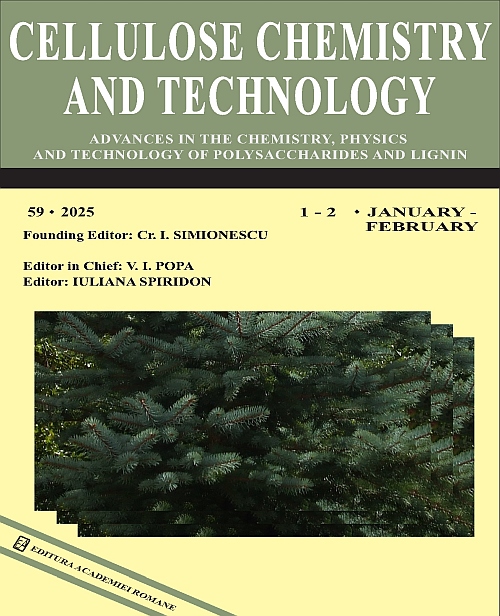|
Title
Optimization of microwave-assisted hydrotropic fractionation of ramie (Boehmeria nivea L.) using response surface methodology
Authors
INDAH HARTATI, DEVI YUNI SUSANTI, IGA TRISNAWATI, DWI JOKO PRASETYO and ANGGITA SARI PRAHARASTI
Received
November 11, 2024
Published
Volume 59 Issue 3-4 March-April
Keywords
hydrotropic fractionation, ramie, RSM, CCD, microwave
Abstract
The optimization of the fractionation of ramie fiber using microwave assistance and a urea solution as the hydrotropic
agent was evaluated in this study through response surface methodology (RSM). A central composite design, a commonly
used matrix design in RSM, was implemented. The independent variables for this research included the liquid-to-solid
ratio, hydrotrope concentration, and duration of hydrotropic fractionation. At the same time, the yield, lignin content, and
cellulose content of the pulp served as the dependent variables. A series of second-degree polynomial equations were
developed to establish the relationship between pulp yield, lignin content, and cellulose content with the parameters of
the fractionation process, including both the antagonistic and synergistic effects of these parameters. The significance of
the process parameters was determined through the analysis of variance, and information regarding the most influential
variables on pulp yield, lignin content, and cellulose content was derived from Pareto charts. The highest yield of the
fractionation process was achieved with microwave-assisted fractionation of ramie fiber at a liquid-to-solid ratio of
43.40%, a hydrotrope concentration of 36.82%, and a fractionation time of 73.63 minutes. The lowest lignin content in
the pulp was obtained during microwave-assisted fractionation at a liquid-to-solid ratio of 25.59%, a hydrotrope
concentration of 3.18%, and a fractionation time of 6.36 minutes. Conversely, the maximum cellulose content in the pulp
was realized during microwave-assisted fractionation at the same liquid-to-solid ratio of 43.40%, hydrotrope
concentration of 36.82%, and fractionation time of 73.63 minutes.
Link
https://doi.org/10.35812/CelluloseChemTechnol.2025.59.26
|



